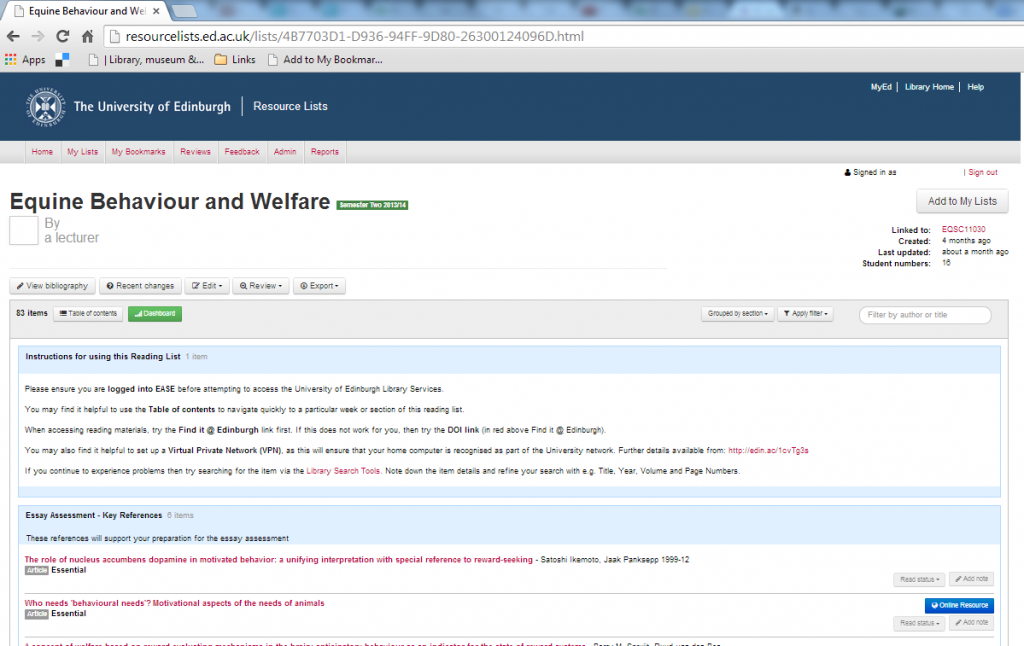
The Accessible and Inclusive Learning policy became active as of the 1st of August 2013. The full policy is available for download: Accessible and Inclusive Learning policy (PDF)
How can ResourceLists@Edinburgh help compliance with the Accessible and Inclusive Learning policy?
The policy mandates that:
Course outlines and reading lists shall be made available at least 4 weeks before the start
of the course.
- Reading lists at this stage may focus on the core texts only (where they are used). Additional reading may be provided nearer to the start date of the course.
Resource Lists can be created quickly, published at any point, can be edited, added to, and updated throughout the semester. This means no waiting around for handbooks to be published or for a reading list to be complete. Resource Lists can be published with just the core (essential) resources and then updated at a later time.
Reading lists shall indicate priority and/or relevance.
Resource Lists provide three indications of priority/relevance:
- Essential
- Recommended
- Further Reading
These are easily set by selecting from a drop-down list.
It’s not necessary for the entire Resource List to be prioritised, but the list should indicate which resources are considered to be key (Essential or Recommended) to understand themes within the course and those which are supplementary (Further Reading). The policy allows that in some subjects it may be necessary that students prioritise reading lists for themselves (in such cases this should be reflected and clearly stated in the learning outcomes of the course and should be assessed, otherwise it is not justified), if this is the case, notations can be applied to the Resource List in order to communicate this to the students.
Remember, we can help you.
Library staff are available to create new Resource Lists for Course Organisers, and once created we will hand over the list or lists for ongoing maintenance.
More information is available on the Resource Lists using Talis Aspire webpage and the ResourceLists@Edinburgh Blog.
//
Stephanie Farley
Library Learning Services Assistant


